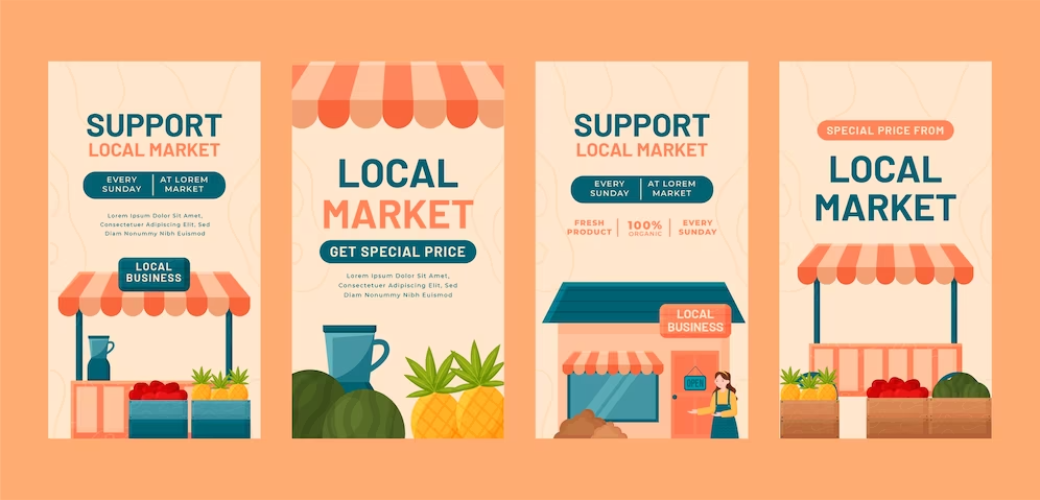Localization vs Translation: Which Approach Suits Your Global Strategy?
Imagine launching your brand in Japan, only to discover your catchy tagline translates to “awkward dinner guest.” It’s a funny thought, but the reality of cultural misinterpretations can be costly. Expanding globally requires more than just translating your message.
Enter localization: a more profound approach that adapts your product, marketing, and user experience to specific cultural contexts. While simple translation makes content understandable, localization builds trust, drives engagement, and unlocks true market success.
This article delves into the key differences between these approaches, explores the trade-offs and benefits, and equips you with the knowledge to choose the strategy that best suits your global ambitions.
Translation vs. Localization
Translation
What it is: In its simplest form, translation involves converting text from one language to another, ensuring accuracy and fluency. Think of it like creating a foreign-language mirror image of your original content.
Benefits: While basic, translation offers a quick and cost-effective way to make your content accessible to a wider audience. It can be a good starting point for reaching new markets and understanding their basic needs.
Limitations: However, translation alone can stumble in the face of cultural nuances. Literal translations can lead to misunderstandings, missed jokes, or even offensive misinterpretations. A recent Common Sense Advisory study found that 71% of global consumers prefer content in their native language, but only 25% are satisfied with simple translations. This highlights the need for a deeper level of adaptation to resonate with international audiences.
Localization
What it is: Localization goes beyond mere words. It’s about adapting your entire product, marketing, and user experience to fit the specific cultural context of your target market. Imagine it as creating a whole new version of your brand that feels native to a different country.
Components: An effective content localization strategy involves things like:
- Language adaptation: Adjusting the tone, idioms, and humor to resonate with local audiences.
- Cultural references: Replacing culturally specific references with relevant equivalents.
- Visual design: Adapting images, colors, and layouts to local preferences.
- User interface adjustments: Modifying menus, buttons, and layouts for user-friendliness in the target culture.
Benefits: By going the extra mile with localization, you build trust, increase engagement, and boost market penetration. A 2023 report by the Localization Industry Association showed that companies with strong localization strategies see a 15-25% increase in customer satisfaction and a 10-20% growth in revenue from international markets.
Translation vs. Localization Costs and Benefits
Choosing between translation and localization involves weighing costs, time, and potential returns.
Cost: Simple translation can be quicker and cheaper, especially for small amounts of text. However, complex content or multiple languages quickly increase translation costs. Localization, with its deeper cultural adaptation, requires more time and specialized expertise, making it initially more expensive.
Time: Translation can be done relatively quickly, while localization demands thorough research, cultural sensitivity, and testing. This adds time to your project, but the long-term benefits can outweigh the initial wait.
ROI: While translation offers immediate access to new audiences, it might not build deep connections. Localization, though initially costlier, fosters trust and engagement, leading to increased customer loyalty, brand advocacy, and, ultimately, higher sales.
Ultimately, the best choice depends on your budget, timeline, and long-term goals. Consider translation for quick access or basic information, but for lasting success, invest in localization to truly connect with your global audience.
Real-World Lessons in Localization
Success Stories
LEGO: Masterfully translated product names and marketing materials for different countries, boosting brand recognition and sales. Imagine “DUPLO” becoming “Double Bricks” in French!
Netflix: Adapted subtitles and user interfaces for diverse audiences, creating a global entertainment experience. Picture Korean subtitles seamlessly explaining American pop culture references.
Mistaken Assumptions
Ford: Due to a corporate communications gap with localization, Ford launched the “Edsel” car in Europe, unaware the name sounded like “arsehole” in Flemish. Oops!
Pepsi: Translated its slogan “Come Alive with Pepsi” to “Bring your ancestors back to life” in Chinese. Cultural faux pas can be costly.
Industry Insights
E-commerce: Localized product descriptions and payment options build trust and increase conversion rates. Imagine showing Japanese customers preferred payment methods like LINE Pay.
Software: Culturally relevant UI design and error messages ensure smooth user experiences. Imagine avoiding confusing symbols or unfamiliar terminology in your app.
These examples showcase the power of effective localization and the pitfalls of relying solely on translation. Understanding cultural nuances and adapting your approach can unlock global success and build lasting connections with your international audience.
Keys to Global Success
You can confidently bridge cultural gaps and connect with audiences worldwide, paving the way for global success by following these steps and investing in a solid localization strategy,
Know Your Audience
Before embarking on your localization journey, deeply understand your target audience. Research their cultural preferences, media consumption habits, and even humor trends.
Imagine tailoring your marketing to resonate with fresh nursing grads searching for the best states to work as a nurse, not just generic career advice aimed at a global audience. That’s the power of knowing your audience and crafting content that truly connects.
Content Chameleon
Craft content that is adaptable and culturally appropriate. Proper document generation uses clear, concise language, leverages visuals wisely (avoid culturally insensitive imagery!), and considers humor carefully. Think about adjusting product descriptions in Japan to focus on functionality instead of emotional appeals.
Assemble the A-Team
Build a diverse localization team with cultural expertise, linguistic fluency, and subject-matter knowledge. Consider partnering with native speakers and industry specialists to ensure authenticity. Imagine collaborating with French translators accustomed to the nuances of technical jargon for your software launch.
Tech Tools to Turbocharge
Leverage translation management systems (TMS) to streamline your workflow, manage multiple languages efficiently, and maintain project consistency. Think of a TMS as your centralized hub for all things localization, from file handling to terminology management.
Quality Control is King
Don’t settle for anything less than impeccable quality. Leverage AI-powered document automation tools to Implement rigorous testing and feedback mechanisms throughout the process, involving native speakers and target audiences. Imagine conducting user testing in Brazil to ensure your website menus navigate intuitively for Portuguese speakers.
Future-Proofing Your Localization Strategy
As the world evolves, so do its languages and cultural nuances. To stay ahead of the curve, let’s explore how embracing future trends in AI, diversity, and adaptability can future-proof your localization strategy for lasting global success.
- While machine translation still has quirks, advancements in AI offer exciting possibilities. Imagine using AI-powered cultural intelligence platforms to analyze social media trends and local news, ensuring your content stays culturally relevant.
- As diversity becomes the norm, cultural sensitivity takes center stage. Avoid appropriation and stereotypes. Focus on genuine representation and inclusivity in your localized content. Picture showcasing diverse models in your global ad campaign, not just Western beauty standards.
- Global landscapes shift quickly. Stay flexible and adaptable. Monitor emerging markets, evolving social norms, and new communication channels. Imagine constantly updating your localization approach to cater to the rise of TikTok in Southeast Asia or the growing prominence of regional dialects.
By embracing these future trends and prioritizing cultural sensitivity and adaptability, you can ensure your localization strategy thrives in the ever-changing world, opening doors to new markets and fostering genuine connections with global audiences.
Closing the Language Gap: Your Choice for Global Growth
In conclusion, understanding the core differences between translation and localization is crucial for your global expansion. While translation bridges basic language barriers, localization goes the extra mile. It adapts your entire brand experience to different cultures, building trust, engagement, and brand loyalty.
Choose translation for quick access to new audiences when budget or time constraints are tight. But for lasting success, invest in localization. Analyze your target audience, plan adaptable content, and build a skilled localization team. Embrace future trends like AI and prioritize cultural sensitivity to remain agile and relevant.
Don’t let language be a barrier to global connections. Take the first step today. Conduct research, consult experts, and start crafting your localization strategy. Bridging the cultural gap unlocks the potential to thrive in a diverse world and connect with audiences across borders. The choice is yours, so make it a global one.
Automated copywriting: Can it reduce the cost of email generation?
In digital communication, one revolutionary leap that has caught the attention of marketers and busi
Best Email Design Size For Marketing Campaigns
Are you starting an irresistible marketing campaign but confused about what an ideal email design si
Improving efficiency in the contract creation process
Contracts are the legal basis for all of the business interactions between a company and its custome






